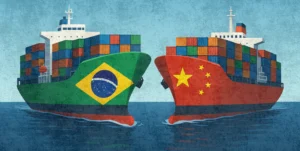This guide highlights the key obstacles and how to overcome...
Read More

Jota's blog
Where global markets, power politics, and international law collide to shape the world order
albatroz
Table of Contents
Inside the Tensions Between India and Pakistan
Rising tensions in Kashmir reignite fears of nuclear conflict between two longstanding South Asian rivals
The world woke up today under the shadow of fears of a new nuclear conflict—not between the traditional powers like Russia and the United States, but between two long-time nuclear rivals: Pakistan and India. Recent tensions in the Kashmir region, exacerbated by a terrorist attack that left 26 people dead—25 of them Indian—have once again brought the relationship between these countries to the forefront.
Roots of the Conflict
The rivalry between India and Pakistan began with the decolonization of British India in 1947, which resulted in the partition of the territory into two states along religious lines: the Muslim majority became Pakistan, while India remained predominantly Hindu. Since then, the issue of Kashmir—a Muslim-majority region that acceded to India after an invasion by armed tribal groups from Pakistan—has remained a persistent source of tension, going beyond simple territorial disputes. The most recent attack, which occurred on April 23, is a painful reminder of the fragility of peace in that area.
The Current Situation
As India investigates how such an attack occurred in one of the most militarized regions of the country, the situation continues to deteriorate. There is increasing pressure on the Indian government to respond militarily, which would inevitably intensify hostilities. Diplomatic responses are locked in a cycle of retaliation: Pakistan has called for the immediate withdrawal of all Indian citizens from its territory, closed its airspace to major New Delhi-based airlines, and canceled visas for Indian nationals. In response, India announced its withdrawal from the 1960 Indus Waters Treaty, which regulated the flow of rivers toward Pakistan—a move that could have severe consequences for Pakistani agriculture. The expulsion of a Pakistani military adviser by India also signals the seriousness of the crisis.
The Nuclear Factor
Today, both countries are armed with nuclear weapons, adding a new layer of complexity to an already fraught situation. India conducted its first nuclear test in 1974, a milestone that prompted Pakistan to accelerate its own nuclear program, culminating in successful tests in 1998, making it the seventh country to possess nuclear weapons. This arms race not only heightens tensions but also carries a significant risk that a conventional conflict could escalate into a nuclear confrontation—with catastrophic consequences not just for the countries involved, but for global security.
A Snapshot of the Tensions
The tensions between India and Pakistan are intensified by social and religious factors that fuel hostility. Extremist groups, for instance, have exploited these divisions to provoke violence and attacks, creating a vicious cycle of conflict and retaliation. The world watches with concern at the potential fallout of yet another military confrontation, especially in a context where diplomacy appears to be running out of steam.
The Role of the International Community
The international community must act urgently to facilitate dialogue and prevent the situation from spiraling out of control. History teaches us that trust is hard to build amid ongoing suspicion—but only through dialogue can true peace be achieved.
The Age of Incompetent Brinkmanship
Outdated tactics, rising rivals, and a rigged poker game—how Trump's...
Read MoreWhy Your Business Needs a
A temporary fiscal address is an officially registered location that...
Read MoreHow to Start a Business
Brazil is full of opportunity — but bureaucracy can be...
Read MoreAbout The Author
Jota Batista is the founder of Albatroz Advisory and the author of this blog. He writes regularly about international business, geopolitics, market entry strategies, and global risk management. Through his articles, Jota shares practical insights for companies looking to expand into Brazil, especially from emerging markets like China, India, and the UAE.
LinkedInEmail-me



